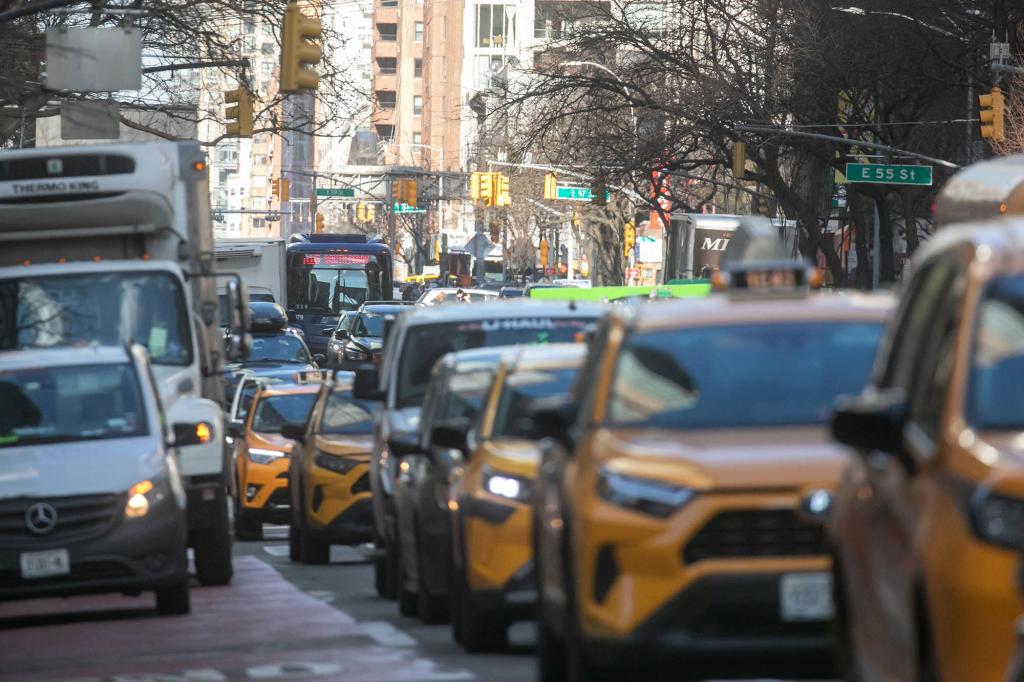NYC congestion pricing will slam New Yorkers who don’t drive


As commuters in the New York metropolitan area bemoan the looming $15 charge to drive into Manhattan below 60th Street, the Congestion Pricing Zone or CPZ, some people who don’t drive — or even own — a car may pay the most.
Those costs have been little mentioned and even less considered.
Many zone residents live in residential apartment buildings with accessory parking garages, run by parking companies, that pay sizable rents, often in the hundreds of thousands of dollars.
These rents help defray building operating costs.
If congestion pricing works as intended, many fewer people will commute by private vehicle into the CPZ and many of those garage operators will abandon their leases.
The buildings — many occupied by middle-income New Yorkers and seniors on fixed income — will be left to cover the shortfall with higher rents or maintenance fees.
That’s only one of congestion pricing’s many unintended consequences.
Many buildings’ workers (porters, maintenance staff, security) have early or late shifts, where taking public transit can be dangerous or even unavailable if they live in a transit desert.
Some will have no choice but to travel by private vehicle into the zone.
Residents (and not just condo and co-op owners) will wind up paying the cost for higher wages to retain staff.
Since most residents of the CPZ tend to be middle-income and retired residents, congestion pricing will impose a significant financial burden on them; it may force many to move.
Zone residents and business owners will also need to pay much higher wages to offset the added commuting cost to attract and retain people who work as caregivers, nannies, maintenance staff, restaurant and hotel workers and others who work early shifts or live in transit deserts.
Police officers, firefighters, health care workers, teachers, and other city workers will also be affected.
(The United Federation of Teachers and other unions have sued to stop the MTA from imposing the fee because of the costs on their members.)
Beyond the impact on business, congestion pricing will also have an enormous financial impact on New York’s art, theater, and cultural institutions, 46% of which are located in the CPZ, according to the state Comptroller.
These institutions add billions to the economy and tens of thousands of better-paying jobs.
Congestion-pricing proponents often cite London as a model system, but that city actually scaled back its aggressive congestion pricing scheme amid public backlash after it harmed the local economy.
London now charges drivers from 7:00 AM to 6:00 PM weekdays and 12:00 PM to 6:00 PM weekends.
The MTA is planning to charge its $15 toll from 5:00 AM to 9:00 PM weekdays and 9:00 AM to 9:00 PM on weekends.
Limiting hours to London’s schedule might provide some relief to Broadway theaters, including their Saturday matinees, restaurants, shopping malls and tourist destinations, as well as early- and late-shift workers.
Eliminating the tax entirely would be far more preferable.
The MTA should tighten its belt, enforce fare collections (farebeating now costs it some $700 million a year), rethink its more grandiose capital project plans and focus on incremental improvements to safety and service.
But MTA is unlikely reverse course unless forced to do so by the courts.
In a recent referendum on congestion pricing, 66% of London residents voted against expanding it.
London’s Mayor Sadiq Khan even blamed the Labour Party’s expansion proposal for sinking its 2023 election prospects.
New York should learn from London’s lessons.
Maria Danzilo is executive director of One City Rising, Inc. Susan Lee is a One City Rising board member and president of New Yorkers Against Congestion Pricing Tax, which filed a federal suit over congestion pricing.







